Orkhan and The Mechanical Gardens: Navigating Time through Art and Architecture
by Carlo Borloni
Orkhan's latest collection, The Mechanical Gardens, stands at the intersection of time, space, and technological evolution.
His work is not simply an aesthetic exploration but a profound philosophical inquiry into how human beings navigate their existence through the intertwined forces of memory, experience, and anticipation.
In this editorial, we will explore the thematic depths of Orkhan's collection, examine its artistic influences, and compare it with significant movements and artists of the past, highlighting how The Mechanical Gardens presents a unique retrofuturist manifesto.
The City as a Living Entity: Orkhan's Dynamic Spaces
At the heart of The Mechanical Gardens lies the notion of a city that is not static but alive, evolving with each viewer's interaction.
Orkhan constructs a space where every street and structure pulses with life, embodying the cyclical movement of time. This living city reflects the tension between the mechanical and the organic, a recurrent theme in his oeuvre.
By merging elements of nature with futuristic mechanics, Orkhan invites the viewer to reflect on the ever-changing urban landscapes we inhabit, shaped by both past traditions and future aspirations.

Turing Drive, Orkhan Isayev
Past, Present, and Future: Temporal Lenses in Orkhan's Work
Orkhan's cityscapes transcend time, offering viewers a fluid experience where the boundaries of the past, present, and future dissolve. He captures moments that evoke nostalgia while simultaneously propelling us toward a futuristic vision.
This conceptualization echoes the works of Syd Mead and Jean "Moebius" Giraud, whose futuristic designs in film and comics created worlds where the past and future coexisted in a harmonious dialogue.
Both Mead and Moebius were instrumental in shaping the visual language of science fiction, where technology and organic forms intermingle.
Orkhan, however, expands on this legacy by integrating a philosophical dimension, the city as a metaphor for the human experience of time.

Lunar Orbit Terrace, Orkhan Isayev

Blade Runner Concept, Syd Mead
Architectural Influences: From Art Deco to Brutalism
Orkhan's architectural landscapes borrow heavily from early 20th-century movements such as Art Deco and Brutalism, though he reinterprets these styles to reflect his retrofuturist vision.
Art Deco, with its emphasis on symmetry, grandeur, and ornamentation, represents the elegance of the past, while Brutalism's stark, raw forms symbolize strength and a commitment to progress.
In The Mechanical Gardens, these contrasting styles coexist, symbolizing the tension between preserving historical identity and embracing technological advancement. This duality is reminiscent of the works of architects like Le Corbusier, whose Brutalist forms focused on functionality, and Frank Lloyd Wright, who sought to create harmony between the built environment and nature.
Orkhan synthesizes these architectural philosophies, creating a space where the viewer must navigate both the weight of history and the possibilities of the future.

Stardust Crossing , Orkhan Isayev

Chrysler Building
Retrofuturism: Balancing Nostalgia and Innovation
One of the most striking features of Orkhan's work is his embrace of retrofuturism, a genre that combines futuristic visions with vintage aesthetics.
In The Mechanical Gardens, retro elements such as vintage transportation and mechanical designs are combined with futuristic architecture, drawing the viewer into a world that feels both familiar and entirely novel.
This approach is not without precedent. Artists like Norman Bel Geddes, who designed futuristic worlds in the 1930s, often incorporated elements of the past to project an idealized vision of the future.
Similarly, Orkhan uses retrofuturism to suggest that progress does not require abandoning the past, but rather, that history and innovation can coexist to create a richer narrative of human potential.

Singularity Square, Orkhan Isayev
Model of "teardrop" car, Bel Geddes
The Role of Technology in Art: From the Analog to the Digital
In a world increasingly dominated by digital art, Orkhan's work insists on the tangible, almost tactile experience of his painted worlds.
His paintings seem to evoke the feel of old media, vinyl records, film projectors, and printed newspapers, while simultaneously embracing the futuristic allure of mechanized cities.
This duality reflects a deep respect for the analog even in the age of digital mass production. Artists like Moebius, who used traditional methods to render fantastical futuristic worlds, shared a similar sentiment; their works carried a physicality that digital art sometimes lacks.
Orkhan's use of retrofuturism becomes a way of honoring the tactile while imagining new technological possibilities, positioning his work in dialogue with past masters while addressing the challenges of the digital present.

Aurora Lane, Orkhan Isayev
Orkhan's Legacy in the Making
As The Mechanical Gardens continues to garner attention, it becomes clear that Orkhan's work is not just a commentary on time, architecture, or technology.
It is a call to reflect on how we, as individuals and as a society, navigate the complexities of modern existence. By drawing from both the past and the future, Orkhan creates spaces that challenge the viewer to live in the present, aware of history, yet open to the possibilities of tomorrow.
His work, situated within the broader context of retrofuturism, brutalism, and digital art, positions him as a leading voice in contemporary art, crafting a vision of the future that is deeply rooted in the past.

Kepler Street, Orkhan Isayev
Sign up for our newsletter to keep up with the latest news from NINFA
Sign up for our newsletter to keep up with the latest news from NINFA
Write us at: info@ninfa.io, or click here if you need support
Copyright © 2026 Ninfa Labs - 12094240962 - All rights reserved

